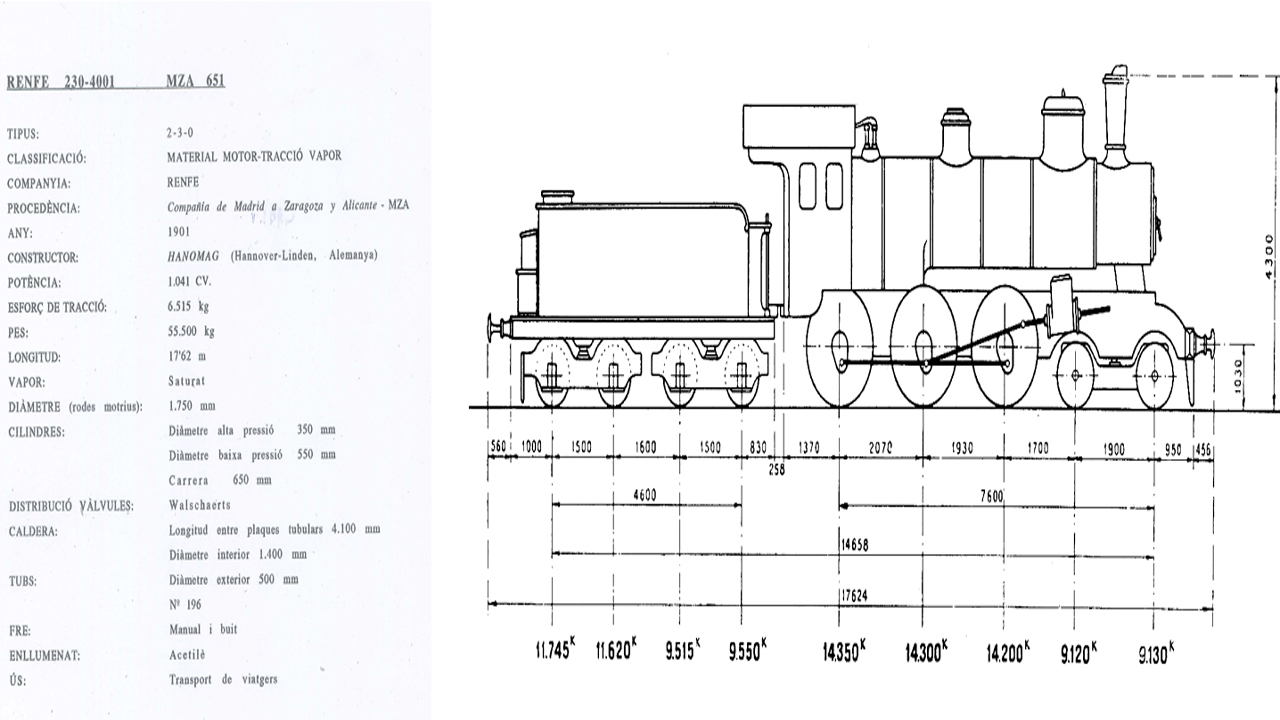
"Compound" locomotive, first half of the 20th century

The "Compound" at the Museum, early 90s

Technical data of the locomotive and the tender

"Compound" scheme
15 - Compound 230-4001 locomotive. Numbering and wheels
The first of the locomotives located beyond the roof of
the Rotonda (Roundhouse) is German, built in 1901, and is
called the “Compound” 230-4001. The MZA company purchased
the “Compound” locomotives to modernise and extend its
fleet; they were the first high-power ones to reach speeds
of 100 km/h in Spain. It pulled fast trains between
Barcelona and Madrid and on other routes of the main
network. Its name comes from the technological system that
was invented by the engineer Anatole Mallet, to use the
excess steam coming out of the engine’s cylinders. Instead
of this steam being expelled into the atmosphere, as was the
case until then, the “Compound” system directed it into
low-pressure cylinders in order to move other engine
components.
What do the locomotives’ numbers stand for? The
nationalisation of railways throughout Europe, and the
establishment of Renfe in 1941, made it necessary to merge
all the private wide-gauge companies into a single
enterprise. In order to unify the names of all the existing
locomotives, which had been peculiar to each company, the
French method of two groups of figures was chosen. The first
three-figure number designated, respectively, the number of
leading, powered and trailing axles. In the second
four-figure group, the first digit indicated the number of
cylinders, while the other figures were a correlative number
indicating the order within the series.
Therefore, the number of this “Compound locomotive”
(230-4001) tells us that it has 2 leading unpowered axles, 3
powered axles connected by rods and no free trailing axles.
Moreover, its engine had 4 cylinders and is the first in its
series. By observing its system of wheels, we can recognise
these technical characteristics.


